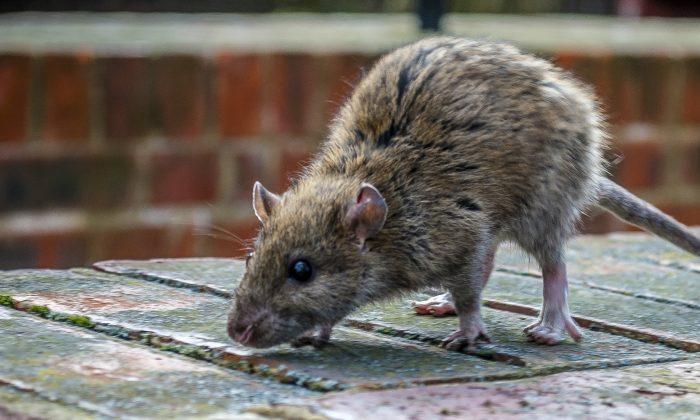The rats scurrying around New York City are carrying a number of pathogens that could be dangerous to humans, including life-threatening gastroenteritis.
“New Yorkers are constantly exposed to rats and the pathogens they carry, perhaps more than any other animal,” explains Cadhla Firth of the Center for Infection and Immunity at Columbia University’s Mailman School of Public Health.
“Despite this, we know very little about the impact they have on human health.”
[aolvideo src=“http://pshared.5min.com/Scripts/PlayerSeed.js?sid=1759&width=480&height=300&playList=518464565&responsive=false”]
For the study in mBio, scientists trapped 133 Norway rats at five New York City cites, focusing on rats trapped inside residential buildings.
In the lab, targeted molecular assays confirmed the presence of 15 of the 20 bacterial and protozoan pathogens. One virus, Seoul hantavirus, was present in eight rats—the first time the virus has been documented in New York City—with genetic clues suggesting that it may be a recent arrival.
Human infection has been associated with multiple cases of hemorrhagic fever with renal syndrome, and chronic renal disease in Maryland and Los Angeles.
It is unknown how often humans become sick from rats and what viruses cross over, but according to Firth, transmission could happen in any number of ways.
Rats leave behind quantities of the pathogens in saliva, urine, or feces that people or their pets come in contact with.
‘All Over the City’
Senior author Ian Lipkin, director of the Center for Infection and Immunity, and the late Joshua Lederberg, a molecular biologist and Nobel laureate, wanted to study rats in New York City to have a point of comparison in case a pathogen crossed over and caused a human outbreak.
“Rats are sentinels for human disease,” says Lipkin. “They’re all over the city—uptown, downtown, underground. Everywhere they go, they collect microbes and amplify them. And because these animals live close to people, there is ample opportunity for exchange.”
Lipkin argues in favor of continual monitoring of the rat population along with studies in people to understand how the animals and the microbes they carry make us sick.
With modern disease surveillance methods, though, a repeat of the rat-borne Black Death can remain just a nightmare.
[aolvideo src=“http://pshared.5min.com/Scripts/PlayerSeed.js?sid=1759&width=480&height=300&playList=517150004&responsive=false”]
A Model for Hepatitis C?
Screening methods developed by the Center for Infection and Immunity identified 18 novel viruses, including two rat hepaciviruses dubbed NrHV-1 and NrHV-2.
Although these are not the closest relatives to human hepatitis C discovered, their presence in animals commonly used in medical research is noteworthy given limits on animal subjects. The two viruses replicate naturally in the animal’s liver, which suggests that their lifecycle is similar to human hepatitis C virus.
“With the loss of the chimpanzee model for hepatitis C, the availability of an animal model that has fidelity to the human model is extremely important to efforts to develop drugs and vaccines,” says Lipkin.
An estimated 3.2 million Americans and 130-150 million people worldwide have a chronic hepatitis C virus infection, which can lead to liver cancer and cirrhosis.
Source: Columbia University. Republished from Futurity.org under Creative Commons license 3.0. Read the original.


Friends Read Free